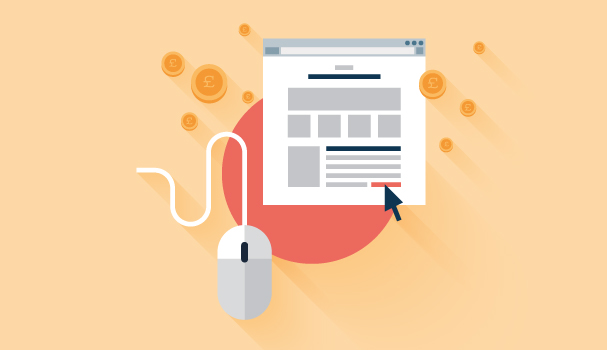If you look at the biggest tech firms to rise to prominence over the last decade, the vast majority share a single factor: they first built a loyal customer before monetising. Given Twitter recently followed in Facebook’s footsteps by rolling out ads across its platform, you’d be forgiven for thinking that advertising is simply the most effective way for these consumer-driven services to generate revenue. However, it may be the case that trying to build value for marketeers halfway through an enterprise’s lifecycle isn’t the only – or even the best – way to generate a profit.
It’s important to recognise that the way consumer services approach their market has changed irrevocably. “If you look at organisations over the last five or even ten years that have come to market in the social side, they typically come to market in a freemium model,” says Kevin Kimber, vice president EMEA of commerce, billing and finance platform Zuora. “There’s been lots of examples: Facebook didn’t have any revenue in the early days, Twitter certainly didn’t, Spotify certainly didn’t.”
Perhaps, then, the first question that needs to be asked is why is there an increasing tendency for web-based services to leave it so late to monetise?
“Primarily, it’s to see whether customers value the relationship and value the service that they provide,” explains Kimber. Taking into account the increasing complexity of the online marketplace, it’s rare that a product or service is on its final incarnation when it’s rolled out to the public. Many significant adjustments are made during this period and free access allows services to build extensive networks of users whilst gradually increasing the value they offer. He continues: “From that point on they look to launch from a freemium into a premium or a dual-blend model to see if there are ways they can monetise that relationship.”
There are plenty of household names that have benefitted from monetising later on in their lifecycles. “If you look at Spotify, which launched in 2008, that was a freemium model and they gained a huge market traction from it,” Kimber says. Frankly, it seems unlikely that the enterprise would have achieved such a momentous step in transforming the way we access and consume music if they hadn’t been able to quickly build a committed consumer base and turn them into staunch advocates. “They disrupted a very traditional market in which we’ve seen those types of offerings and obviously the economic climate has driven a very different interaction point between consumers and the music industry.”
But even more important than building an audience is capitalising upon it. As previously mentioned, the examples that spring most immediately to mind – such as Facebook, Google, Twitter – have engaged in tactics to marry commercial interests with the interests of consumers. Kimber remarks: “The interesting thing about, for example, Twitter for Business is more and more companies are understanding the importance of it as an interaction point with their customers.”
However, with companies that have staked a claim in a social space, advertising can be tricky to align with one’s core proposition. “The challenge of advertising – as we’ve seen in the print and publishing arena – is that it’s not the end customer,” says Kimber.
In Kimber’s eyes, some publications focused too heavily on advertising as their sole revenue stream and this ultimately only acted to their detriment. “As more and more technically savvy individuals, we’re much more likely to be turned off by mass advertising than perhaps we were in the past,” he explains. “So the requirement to drive that relationship direct with the customer is a fundamental one.”

And there are plenty out there who seem to smell which way the wind is blowing. Kimber feels that Snapchat’s recent refusal of a $3bn offer from Facebook is evidence that the enterprise is aware if it wants to go the distance, it will need to firmly embed the user at the heart of its proposition. “They’re still testing the relationship with the customer and still don’t yet fully understand what the customer wants from them and therefore how they might be able to drive a monetisation strategy,” he comments. Without this being clearly enshrined in the core of the business, there is a good chance that, long-term, its value proposition could be undermined.
But what are the options for enterprises who don’t feel serving ads up to their customer base is the best route to go down? “More and more organisations are looking at how they perhaps monetise by offering premium services customers are willing to pay for,” Kimber says. Already many a service exists which successfully monetises on this basis; he points to the model upon which LinkedIn operates, which enables the service to successfully expand upon its existing revenue streams. “There are plenty of examples of organisations that initially launch as freemium and then gradually start to offer premium services, which, fundamentally, we as individuals want to consume.”
This is something which has helped create a real subscription economy. “A subscription model enables us to get into those types of products and services much easier than the old one time purchase,” says Kimber. From BMW’s i3 electric car to the US-based Dollar Shave Club – which delivers razors to men’s door for as little as $12 a year – there are no end of products and services now being sold under subscription. He continues: “All of these industries are asking ‘how do we pivot into a relationship with these customers that is ongoing?’”
There is, of course, plenty of precedent for this; some of the most prominent industries making use of a freemium model such as the media and technology have had great success launching premium level products and services. However, this is not to say that there isn’t significant backlash against businesses which decimate their service to lock areas behind paywalls. As Kimber comments: “Just turning what is today a free service into a paid service tends not to work; clearly it’s about offering premium services over the top that people are willing to pay for.”
Monetising relationships in this way requires an enterprise to understand the real value of what it is offering, ensuring that the way it structures its subscriptions adds real value for those that pay, rather than removing it as punishment for those that don’t. Getting this right takes persistence, not to mention careful oversight.
“The key is for any company looking to launch from a freemium to a premium is having an acceptance that you have to continually test,” Kimber says. A service like Netflix, which offers a free month before requiring customers to subscribe will need careful testing and tweaking to ensure details and price points are just right. “How do they convert from the first month to the second month?” he asks. “And as they start to scale their pricing up and add more valuable content, is that an amount people are willing to pay?”
Ultimately, whether a consumer-driven service decides to monetise through ads or adding saleable value, it’s undeniable that whatever decisions you make must hold your customer in mind. “The consumer is driving and dictating the business models that organisations are offering,” concludes Kimber. ![]()
Share via:








































